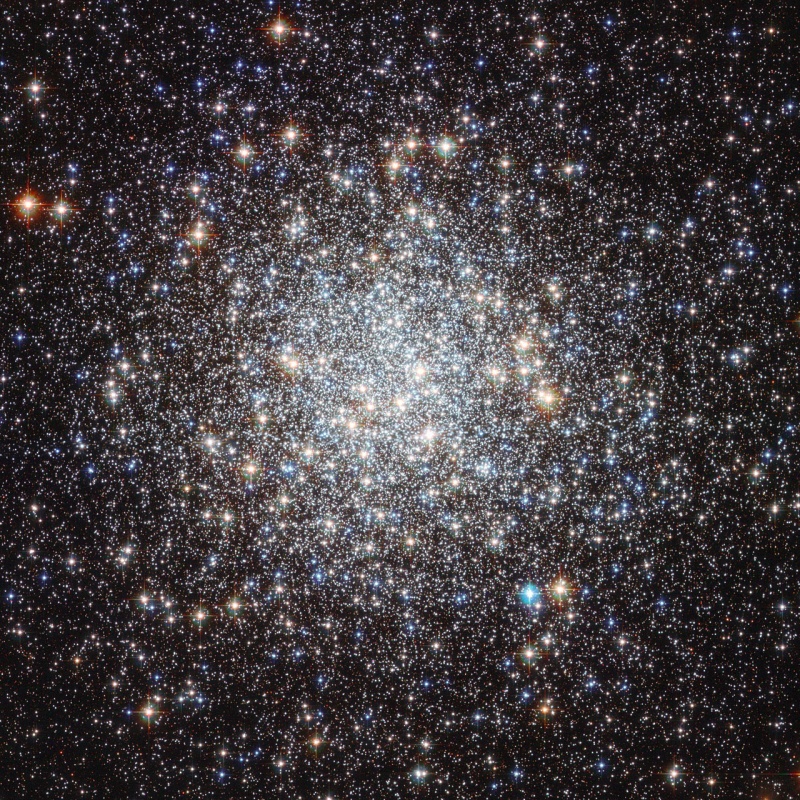Credit & Copyright: ESA/Hubble,
NASA
Explanation:
Renown 18th century astronomer Charles Messier
described
this 9th entry in his famous astronomical
catalog as "Nebula, without star, in the right leg of Ophiuchus ...".
But Messier 9 (M9)
does have stars, known to modern astronomers as a
globular cluster
of over 300,000 stars within a diameter of about 90 light-years.
It
lies some 25,000 light-years distant, near the central
bulge of our Milky Way galaxy.
This
Hubble Space Telescope close-up
resolves the dense swarm of stars across the
cluster's central 25 light-years.
At least twice the age of the Sun and deficient in heavy elements,
the cluster stars have colors corresponding to
their temperatures,
redder stars are cooler, bluer stars are hotter.
Many of the cluster's cool red giant
stars show a yellowish tint in the sharp Hubble view.
1999 2000 2001 2002 2003 2004 2005 2006 2007 2008 2009 2010 2011 2012 2013 2014 2015 2016 2017 2018 2019 2020 2021 2022 2023 2024 2025 |
Январь Февраль Март Апрель Май Июнь Июль Август Сентябрь Октябрь Ноябрь Декабрь |
NASA Web Site Statements, Warnings, and Disclaimers
NASA Official: Jay Norris. Specific rights apply.
A service of: LHEA at NASA / GSFC
& Michigan Tech. U.
|
Публикации с ключевыми словами:
globular cluster - Шаровое скопление
Публикации со словами: globular cluster - Шаровое скопление | |
См. также:
Все публикации на ту же тему >> | |
